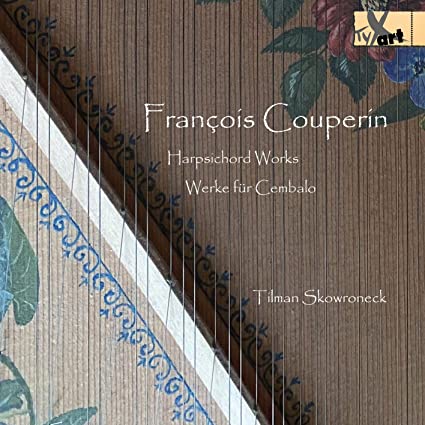

Premier Prélude in C major (from: L'Art de Toucher le Clavecin) Selections from Troisième Ordre in C minor (from: Pièces de Clavecin, Premier Livre) Second Prélude in D minor (from: L'Art de Toucher le Clavecin) Selections from Second Ordre in D minor (from: Pièces de Clavecin, Premier Livre) Sixième Prélude in B minor (from: L'Art de Toucher le Clavecin) Huitième Ordre in B minor (from: Pièces de Clavecin, Second Livre)
This is a stupendously good recording of a notoriously troublesome instrument to realistically and authentically capture and project. It positions the listener's perspective in front of the keyboard, with the higher treble strings emanating from the right speaker, the lower bass strings from the left, and the mid range right down the middle. And if you play it loud enough, you can feel the vibrations from the lowest bass strings rumble through the floorboards. The instrument used in this recording is a 1981 two-manual harpsichord based on 18th century French models, built by Tilman Skowroneck's father, Martin Skowroneck. If it's anything like his other instruments, it's built using bird quill and beryllium copper strings instead of brass. It's blessed with a full-bodied and resonant sound, far removed from the sonic characteristics of "plinky" and metallic sounding harpsichords.
On this instrument, the music of French baroque innovator François Couperin "Couperin le Grand" (1668-1733) comes to life under the erudite scrutiny of Tilman Skowroneck. Steering away from the traditional form of keyboard suites which included dance movements like the Sarabande, Courante, Bourrée, etc ..., Couperin introduced the more programmatic and descriptive pièces de caractère (character pieces), and published many books with the purpose of teaching musicians the art of playing the harpsichord, the common keyboard instrument at the time. Less exacting than their German counterparts, these rather informal pieces must have appealed to a broader range of aspiring musicians. Not to say that they don't impose their own level of musical integrity, but their more alluring and highly ornamented style makes for a less severe learning, and listening experience. And here it's the combined artistry of Tilman Skowroneck and the rich sound of this particular harpsichord that may well revive interest in this archaic, but irreplaceable instrument here in our digital age.
Jean-Yves Duperron - November 2021